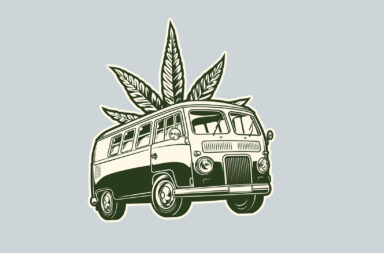
in cooperation with Magistratura Democratica and Unione Camere Penali.
THIRD “WHITE BOOK” on the 2006 Italian drug legislation and its consequences on the penal and prison systems
Edition June 2012 from data collected in 2011
Executive Summary
Three years ago, Forum Droghe developed a project aimed at evaluating the anti drug legislation (the so called “legge Fini-Giovanardi”), approved by the Parliament in 2006, under the Berlusconi government: the result was the First White Book, released in 2010 (from data 2006-2009), followed by the Second White Book, published in 2011 (from data 2011). The Third White Book was published in June 2012, presented on the International Day against Drug Abuse and Illicit Trafficking. During the years, several more Italian NGOs, as well as associations of magistrates and lawyers joined the initiative.
The First and Second White Books were based on the official data from the Annual Report on Drugs and Drug Addiction, which the government is due to present to the Italian Parliament. This year, the Italian Government has not presented the Report yet. As a consequence, data in the Third White Book has been directly collected from the Ministry of Home Affairs (Ministero degli Interni) and the Department of Prisons Administration (Dipartimento Amministrazione Penitenziaria).
Not only does the Third White Book confirm the “unwanted consequences” of the 2006 drug legislation, showing that the overcrowding of the Italian prisons is mainly due to the high rates of imprisonment for minor drug crimes; it also highlights flaws in collecting data and suggests methodological improvements for a more reliable process of evaluation of the drug legislation.
Key points of the 2006 drug legislation
– Personal use of drugs. Possession of drugs is punished by administrative sanctions, providing the amount is below a given threshold, which is meant to distinguish between use and dealing (“maximum quantity allowed”). The maximum amounts were determined in 500 mg (active psychoactive principle) for cannabis: 250 mg for heroin; 750 mg for cocaine).
– Administrative sanctions for personal use. Harsher sanctions are provided for users than in the previous legislation (such as a prohibition to leave their place of residence during some hours, prohibition to drive cars, mandatory checking in at the local police at least twice a week). They may be inflicted for longer periods. Therapeutic alternatives to sanctions are no longer provided and drug users may attend a therapeutic program in addition to sanctions only.
– Penalties for production, dealing, trafficking (art.73/74). The penalties set for possession above the threshold (supposedly for dealing and trafficking) range from 6 to 20 years of imprisonment for all substances.
– Cannabis upgrading and rise in penalties for cannabis offences. The 2006 law, by upgrading cannabis to Schedule I, leads to a substantial rise in penalties (from 6 to 20 years, compared to 1 to 6 years in the previous law).
– Penalties for drug crimes of “minor relevance”(art.73, par.5). Less severe penalties may be sentenced for drug crimes of “minor relevance”, when the person is found in possession of quantities slightly above the threshold (with penalties ranging from 1 to 6 years of imprisonment).
– Alternatives to imprisonment. Drug addicts sentenced to less than 6 years imprisonment (or with remaining 6 years to spend in prison) may be sent to alternative therapeutic programs.
The consequences on the rates of imprisonment: 1 out of 3 is imprisoned for drug offences
The Third White Book confirms the trend of higher rates of imprisonment, particularly for minor drug crimes and cannabis crimes. One person out of three is imprisoned for offences against art.73 and 74 of the drug legislation. The figures about imprisonment for drug crimes compared to the overall imprisonments are highly significant: in 2006, 25.399 people were imprisoned for drug crimes (out of the overall 90.714): it means a rate of 28% on the overall imprisoned citizens, rising to 31% in 2010 and to 33,1% in 2011.
The trend is confirmed by the striking figures of the prisons population, determined on a single day of the year. On November 17th 2011, 11.380 people were detained in provisional arrest for drug offences out of 28.636 prisoners in provisional arrest as a whole; on the same day, there were 14.590 sentenced prisoners for drug offences out of 37.750 sentenced detainees as a whole. To summarize: one third of people in provisional arrest are detained for drug charges, while almost 40% of prisoners have been sentenced for drug crimes.
Escalation of drug offences reported by the police
Offences against art.73 and 74 (dealing and trafficking) are especially on the rise: from 29.724 in 2006, to 33.686 in 2011.
Law enforcement focused on cannabis
Most of the police activity is against cannabis offenders (40% of all drug offences), in steady increase (12.805 cannabis offences in 2008, 14.680 in 2011). In 2006, 25.730 people were arrested for cannabis offences, 28.552 in 2011. Marijuana seizures are increased by 54,1% and hashish seizures by 29,4%, while an outbreak of cannabis plants seizures is registered (563.198!).
..and on minor crimes
– Drug crimes mainly involve art.73 (dealing) and art.74 (organized trafficking), but the overwhelming number of charges concerns art.73: 33.686 charges for art.73, versus 3070 for art.74. That means that small dealers (or even drug users caught with an amount of substances over the threshold) are the favourite targets of police activity, particularly for cannabis (15.162 people charged for cannabis, 41% of the overall charges for art.73).
– As above shown, the anti drug law includes a particular norm for “drug crimes of minor relevance” to be punished with milder penalties (paragraph 5, art.73). Of course, the prevalence of charges and sentences for this norm is the most reliable figure to realize the focus of law enforcement. Unfortunately, no official data are available for paragraph 5. An in depth qualitative research (carried out in 2009 and sponsored by Regione Toscana) shows a rate of prisoners (sentenced or charged) for drug crimes of “minor relevance” up to 40% of the overall drug crimes.
Punishment of drug users: administrative sanctions doubled in 5 years
– In 2006, 8.180 administrative sanctions for personal use were inflicted; the double in 2010, 16.154. Also, the number of users caught and deferred to the Prefetto (the local authority entitled to sanctioning personal use) is on the rise: from 39.075 in 2006, to 47.093 in 2008 (after this year, data are not reliable yet).
Dramatic drop in therapeutic programs for users
– While the rate of sanctioned users jumps up to 100%, there is a drop in the therapeutic programs attended by sanctioned users (6.173, in 2006; 518, in 2010).
Therapeutic programs for drug users: negative trends
– In the years 2006-2012 an overall decrease in alternative therapeutic measures is registered. On January 1st 2006, 3850 drug offenders (diagnosed as addicts) were attending a therapeutic program; on May 30th 2012, the figure dropped to 2816. Although the number of alternative therapeutic programs is slowly increasing since 2010, still most of users are allowed to treatment only after a period of time spent in jail. Moreover, only sentenced prisoners are sent to treatment, for drug users in provisional arrest are rarely ruled to alternative programs. Until 2006, most addicts were directly sentenced to therapeutic programs (without spending any time in jail). Since 2006, the opposite trend is registered, as people released from prison to undergo treatments outnumber free persons ruled to alternative programs: on January 1st 2010, 1150 inmates were sent to treatment versus 721 free persons. On May 30th 2012, 1854 detainees were sentenced to treatment versus 962 free persons.
Conclusions and recommendations
– The trends shown in the First and Second White Book are confirmed in this Third Edition: the impact of the 2006 anti drug law on the overall rates of imprisonment is the main reason for the present overcrowding of Italian prisons. Minor drug crimes seem to be the favourite target of law enforcement and punishment is focused on cannabis crimes. While punishment is on the rise, therapeutic alternatives are on the fall, with a consistent drop in therapeutic programs for sanctioned users as well as in alternative treatments to imprisonment.
– The coalition of NGOs which has released the Third White book calls for a revision of the present drug legislation, spanning from minor amendments to promote therapeutic alternatives and cancel the “three strikes and you are out” norms, up to a thorough revision aimed at reintroducing different schedules (according to the risk of different substances) as well as the complete decriminalization of drug possession and cultivation for personal use. Also, a “lenient on drugs” interpretation of the current legislation is to be supported within the norms against prison overcrowding the Parliament is currently debating: minor drug crimes should be dismissed as “socially irrelevant”.
– A better quality of data is required. Data from the Department of Drug Policies, released in the Annual Report on Drugs and Drug Addiction, are not sufficiently reliable and are still inadequate to their purpose of evaluating the legislation.
Download the THIRD “WHITE BOOK” on the 2006 Italian drug legislation and its consequences on the penal and prison systems (pdf, italian)
(by Grazia Zuffa, Forum Droghe)




